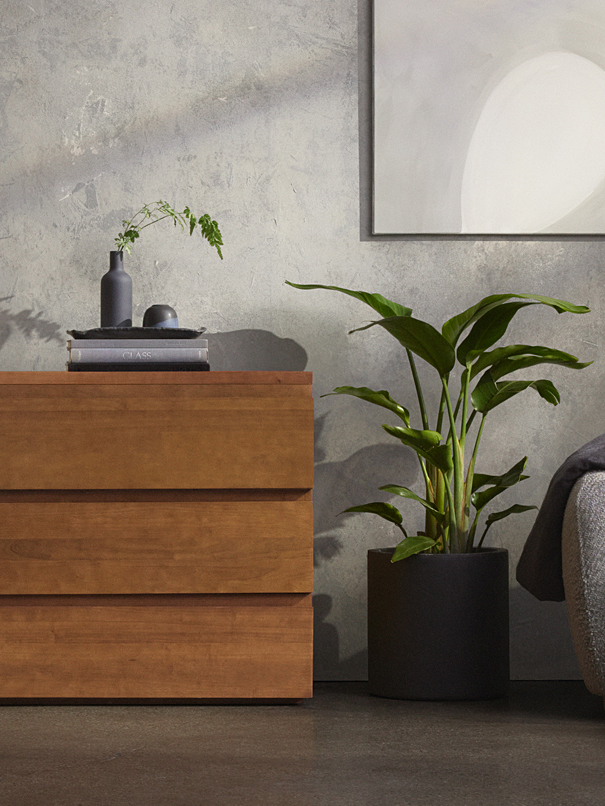We may earn revenue from the products available on this page and participate in affiliate programs.
I was just coming home from a rather strenuous run when I saw it: a pile, no, a mountain—basically the Crag from Nickelodeon’s Guts, remember that?—of boxes at the foot of my Brooklyn stoop. My heart rate increased once again: My Thuma dresser had arrived! The packages, when stacked, were taller than my 5-foot-9 frame, and when I went to move one myself toward the stairs, it wouldn’t budge. But still! I wasn’t about to let a challenge stop me from a dresser I had dreamed about for weeks.
The whole reason I wanted the Thuma was so it would replace my IKEA Malm, which has lasted six years and one move—and was about to travel one room over to our home office and become extra storage. There was nothing wrong with it, but the promise of real wood and Thuma’s “no assembly” system was, well, promising.
I had been warned by the brand’s publicist that the boxes would be big and heavy, so from my stoop, I called in reinforcements, aka my fiancé, who was conveniently also just coming home from a workout, and so we sweatily brought them up to the second floor, one at a time.
Thuma The Dresser

Time out for some details: Thuma, a brand lauded for its tools-free bed frame, launched its modular dresser in late 2022 in three shades of recycled wood and with endless configurations. Each drawer comes à la carte and is stackable, meaning you can build the exact piece that you’d like, whether it’s four drawers stacked on top of each other to make one sleek island, or in my case, two stacks of three pushed together to make one long and wide piece. Once you’ve made your desired shape, you lay a flat surface over the drawers.

Okay, but back to the assembly, because opening each box was a bit of a journey. The heavy wood drawers are surrounded in cardboard, so while I extracted each one from the box, my fiancé was on breakdown duty, which was its own full-time job. Honestly, my task, which included stacking the drawers on top of each other and securing them together with one big screw, was easier than his, and the whole thing, start to finish, took us a good hour and a half (with a sandwich break).

Once I stacked them and Instagrammed a pic, a follower pointed out that it actually looked a lot like a Malm, but to that, I reply: Don’t believe everything you see on Instagram. Instead of particleboard, the Thuma dresser is made from recycled wood (have you heard me talk about how heavy this thing is yet?), and unlike my beloved Malm, the finish won’t warp if I spill water on it. It feels solid, like I’ll have it forever. Plus, knowing I can switch up the configuration—even add or subtract the feet—if I ever move is a true benefit.

That said, the drawers are about half as shallow as a Malm, which means every garment has to be rolled and file-folded—and so I had to do some serious wardrobe editing. My collection of 12 pairs of jeans got whittled down to seven, and my workout gear got a serious chop. But I will not say this is a bad thing! No one needs 12 pairs of jeans. In fact, I’m grateful that I have an excuse to donate the overflow and live with less.

Yes, there are a few other things I would change, like making one long piece that lays across the top so that there isn’t a gap between the two dressers for necklaces to slide down (true story; it happened and was annoying). And priced at $2,345 for a 3-by-2 configuration, should Thuma offer white-glove service? Probably.
Overall, the Thuma’s The Dresser is a major upgrade to my previous flat-pack one, and the whole setup feels much more grown-up. The drawers slide effortlessly and close quietly, and I don’t have to worry about a flimsy bottom sagging under the weight of my clothes. The legs also look chic, and I’m already brainstorming ways I can play around with its configuration—what if I put something in between the two dresser pieces?
And while I’ll always be real about assembly, ultimately, bringing each box upstairs and unpacking it all was worth it to have a dresser with which I’m about to have a long-term relationship.

